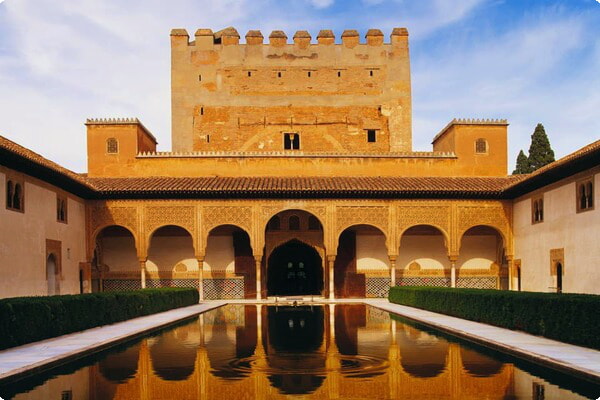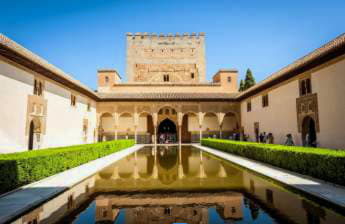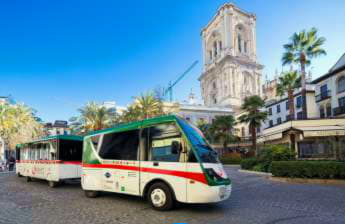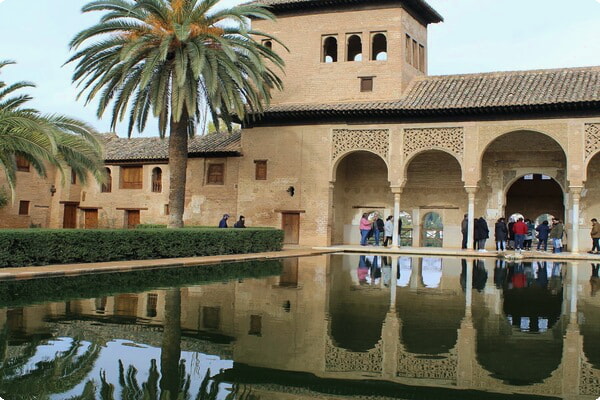Visiting the Alhambra in Andalusia can be a memorable experience when you plan your trip with a local guide. You'll learn about the history of the palace and its unique architecture and enjoy the scenic views of the city. You'll also have the chance to sample the local cuisine and visit the many museums.

Comares Palace
During your Alhambra tour you will have the chance to learn about the rich history of the area. Your tour guide will explain the significance of the various structures in the area.
You will also have a chance to experience the Alhambra's sensory features. These include a sensory tour that will allow you to smell items and taste them.
During your visit to Alhambra, you will have the chance to visit the Nasrid Palaces. These are some of the most important structures in the area. They were built during the 13th century. They are complex and include various features. They are a mixture of Muslim and Christian architecture. They were used as a home for the kings and for government administrations.
Another important structure is the Palace of the Lions. This is the oldest of the three buildings in the area. It was built as a palace by Muhammad V. This was a place where the sultan would hold meetings with his council of ministers. They would also hold public receptions.
Torre de la Vela
Located in Granada, Alhambra is a complex consisting of three main areas. The oldest is the Alcazaba, built in the 13th century. It was designed to protect the residents of the Alhambra from Christian soldiers.
Alhambra is also home to the Palacio de Comares, the official residence of the Emirs. It is impressive with its facade.
The Torre de la Vela is the tallest tower in the Alcazaba fortress. It is 27 meters high and provides panoramic views of the city. The tower was probably built during the 10th or 11th century. The interior is a four-storey structure with brick pillars and a terrace on the upper part.
Torre de la Vela is also famous for its bell, which is used to commemorate the overthrow of the Emirs of Granada. The current bell was built in 1840 and is located on the western facade of the tower.
Court of the Lions
Located within the Alhambra complex in Granada, the Court of the Lions is the regal name for a palace built by Muhammad V in the 14th century. Located at the east end of the palace, it was the largest and most elaborate of the six palaces. Its notable features are the zawiya and the palatial Palace of the Lions. The palace was restored several times in the course of the following centuries, and the last major restoration was in 2003. The palace's best attributes are its soaring stalactite domes and awe-inspiring ceiling paintings.
The Court of the Lions is a must-see, not to mention a must-eat, and should be at the top of your list if you're a fan of Granada's opulent palaces and palaces of the past.
Museum of Fine Arts
Located at the Palace of Charles V, the Museum of Fine Arts in Alhambra is a place for temporary and permanent exhibitions. It features excellent works of Spanish-Moorish art. The museum is open Tuesday through Saturday from 9 a.m. to 3 p.m. and Sunday from 9 a.m. to 9 p.m.
The Museum of Fine Arts in Alhambra features one of the best collections of Spanish-Moorish art in Spain. The works are mostly religious paintings from Granada monasteries, as well as excellent examples of ceramic art. The museum also features the Allegory of Death, a religious metaphorical piece.
The museum has seven rooms, each in chronological order. The walls of the Museum of Fine Arts in Alhambra are made of large, sculpted rectangular stones. The museum also features a spacious patio.
Nasrid palaces in Andalusia
Located in Granada, the Alhambra is the most popular tourist attraction in Spain. A visit to the palace entails three hours of sightseeing. Unlike other European royal palaces, the Nasrid Palace is not overly ornate. It also offers a free baby carrier, which makes it a family-friendly experience.
The Alhambra is divided into two main areas. The first is a complex of three palaces and two courtyards. The second area is the Museum of Alhambra, which displays art and antiquities.
The museum has a collection of marble columns and other antiquities. There are also a few frescoes, statues, and a local painter's work. The building is connected to the Alhambra by an underground tunnel.
The most interesting part of the Alhambra is the Nasrid Palace. It was a royal residence, used for state affairs and diplomatic matters, as well as for prayer and receiving dignitaries. The interior is not overly ornate, but is full of interesting inscriptions.






